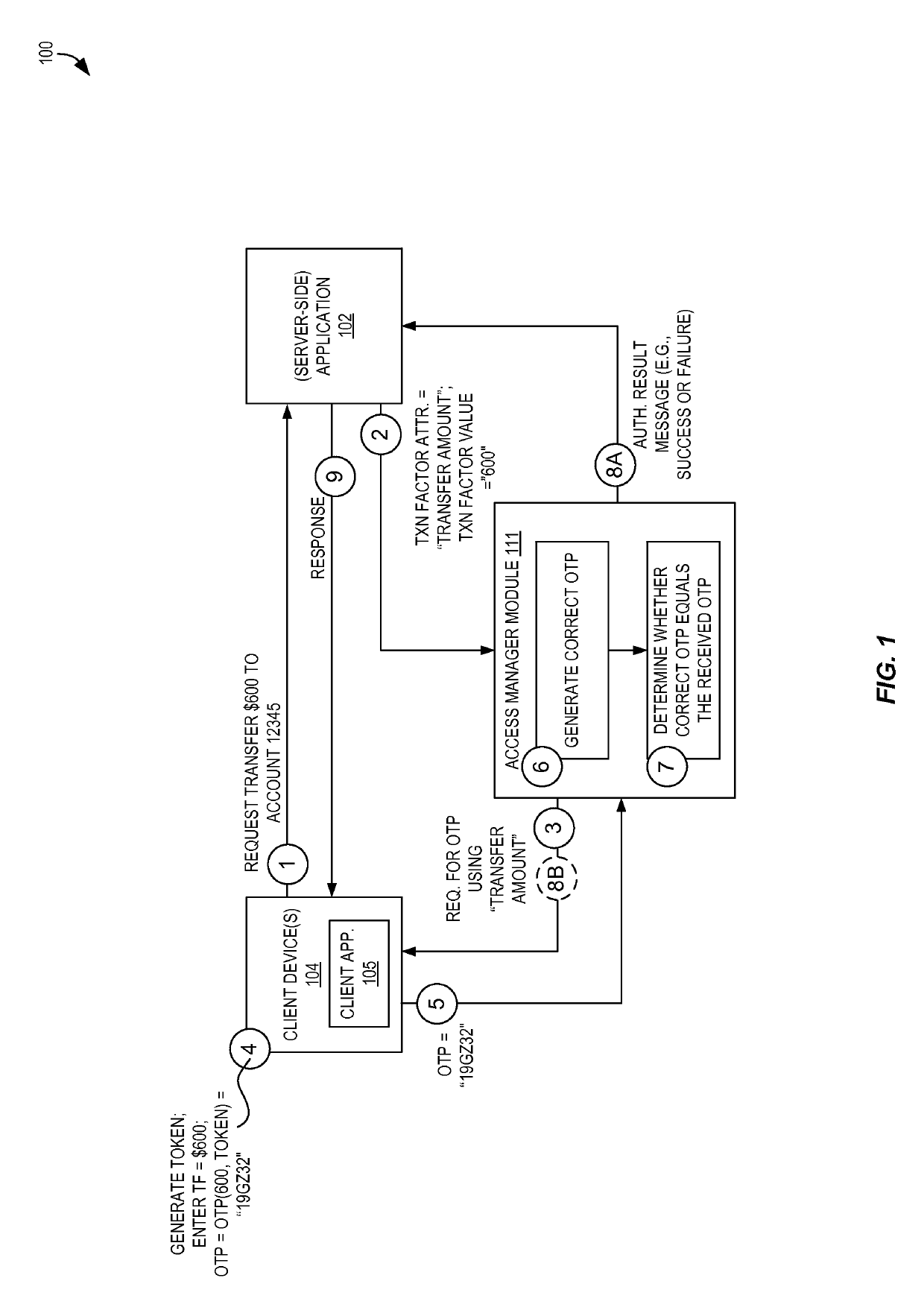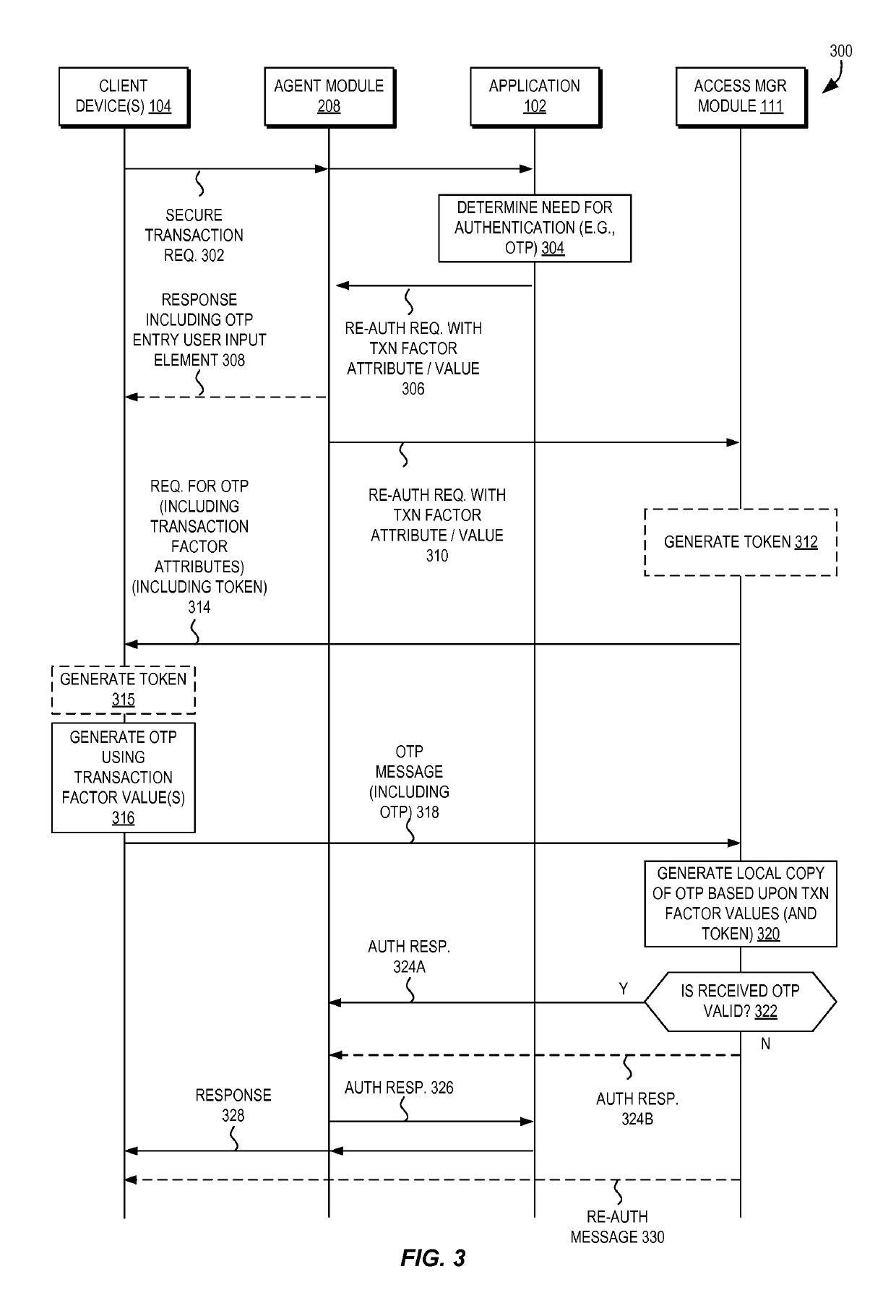Declarative techniques for transaction-specific authentication
a technology of transaction-specific authentication and declaration techniques, applied in the field of computing systems, can solve the problems of many authentication systems being vulnerable, transactions not being approved, and credentials being stolen, and achieve the effect of increasing security
- Summary
- Abstract
- Description
- Claims
- Application Information
AI Technical Summary
Benefits of technology
Problems solved by technology
Method used
Image
Examples
Embodiment Construction
[0030]In the following description, for the purposes of explanation, specific details are set forth in order to provide a thorough understanding of embodiments of the invention. However, it will be apparent that various embodiments may be practiced without these specific details. The figures and description are not intended to be restrictive.
[0031]Certain techniques are disclosed herein that enable transaction signing using modular authentication via declarative requests from applications.
[0032]In some embodiments, an application seeking additional authentication for a transaction with a user sends a request for transaction signing to an access manager module using a declarative statement indicating what data associated with the transaction is to be used as part of the transaction-signed authentication. In some embodiments, the declarative statement includes one or more transaction factor attributes and one or more corresponding transaction factor values associated with the transact...
PUM
 Login to View More
Login to View More Abstract
Description
Claims
Application Information
 Login to View More
Login to View More - R&D
- Intellectual Property
- Life Sciences
- Materials
- Tech Scout
- Unparalleled Data Quality
- Higher Quality Content
- 60% Fewer Hallucinations
Browse by: Latest US Patents, China's latest patents, Technical Efficacy Thesaurus, Application Domain, Technology Topic, Popular Technical Reports.
© 2025 PatSnap. All rights reserved.Legal|Privacy policy|Modern Slavery Act Transparency Statement|Sitemap|About US| Contact US: help@patsnap.com



